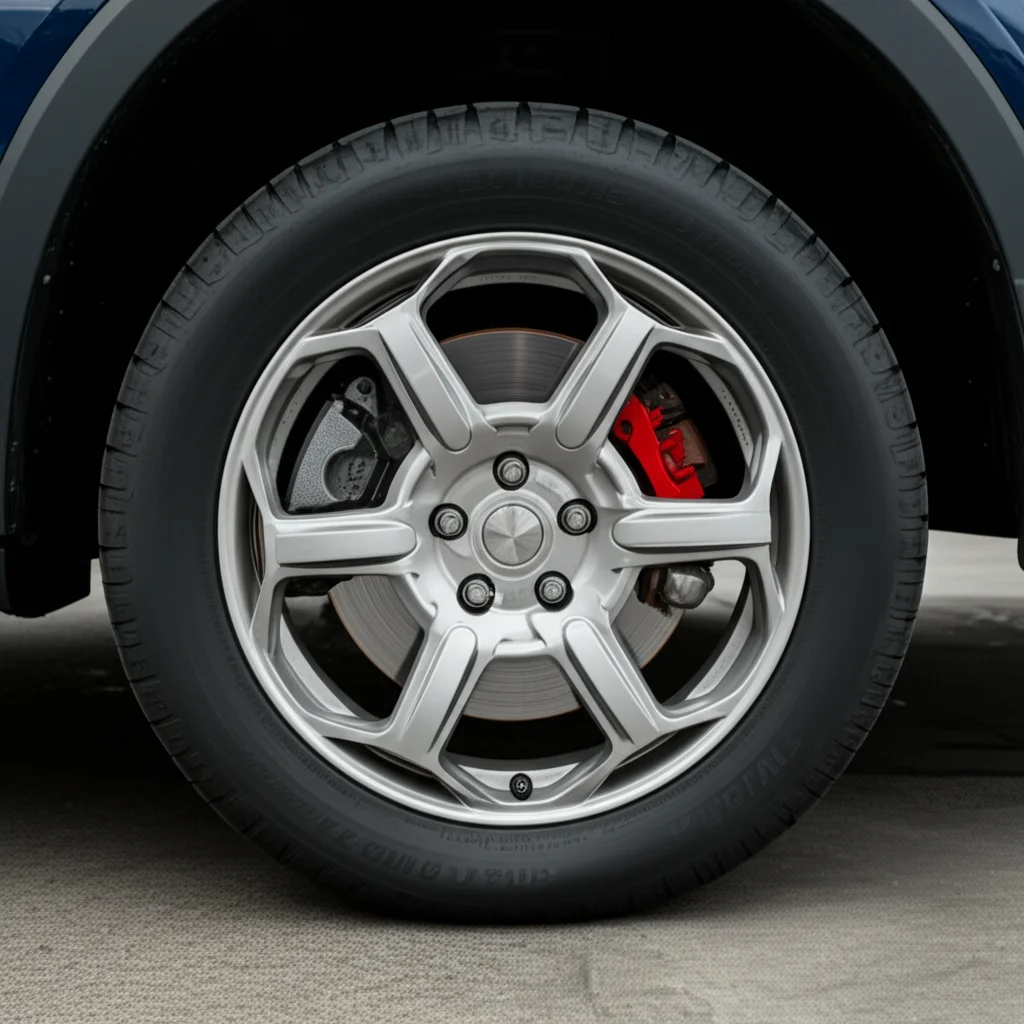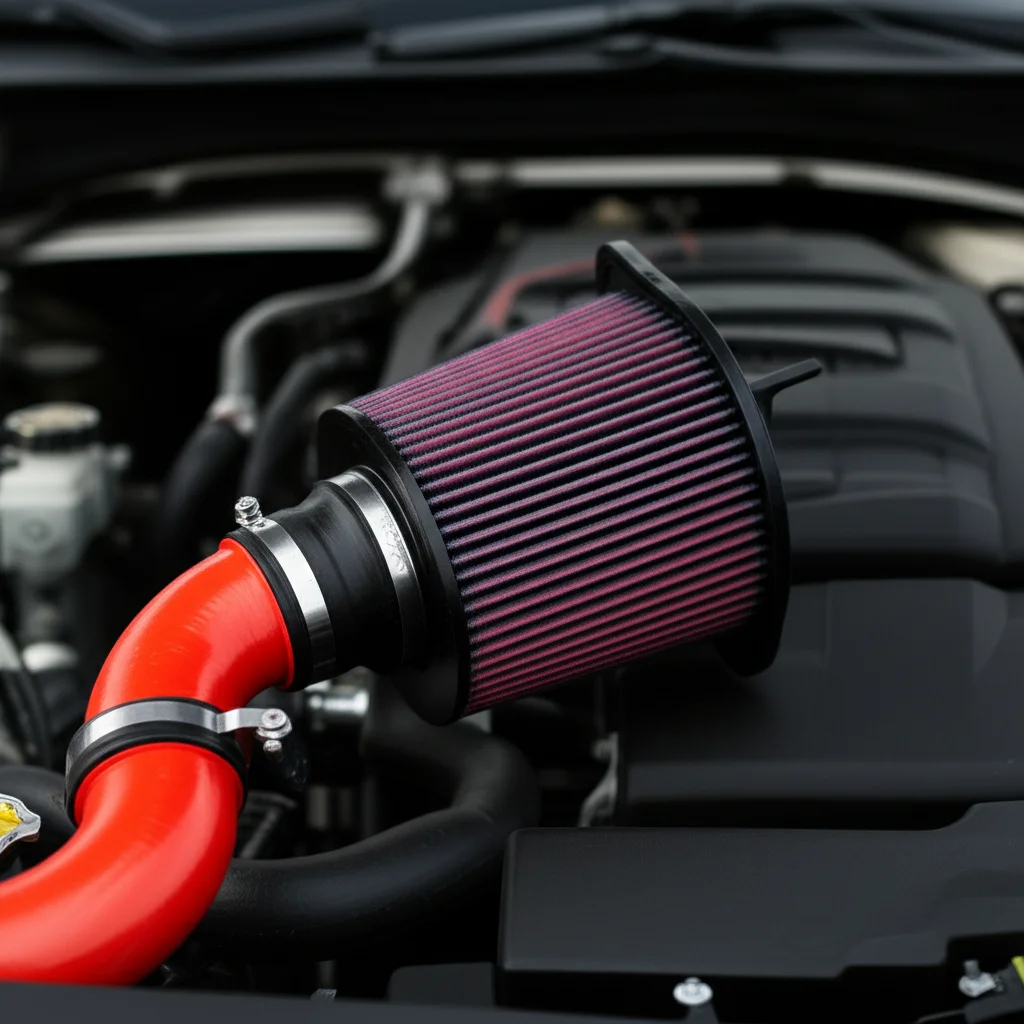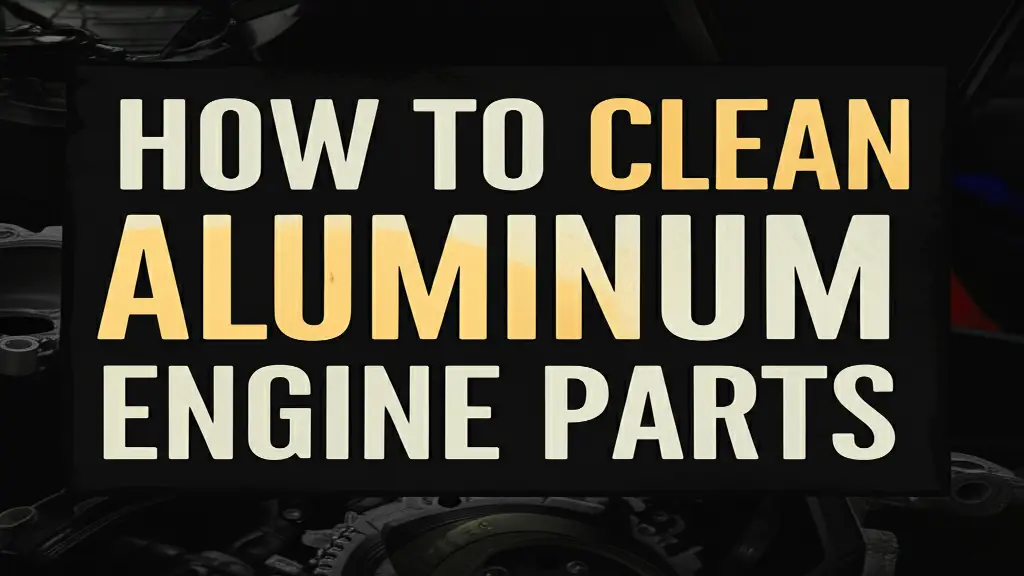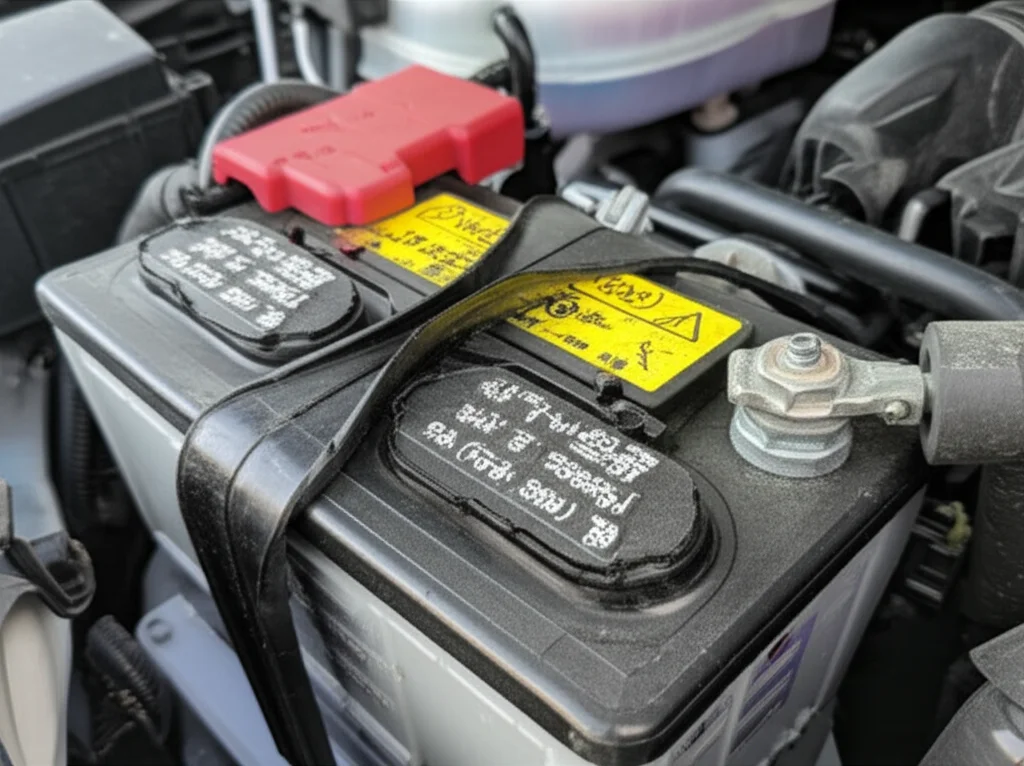· Todd Martin · Automotive Maintenance · 15 min read
How To Clean Brake Rotors Without Removing Wheel

Revitalize Your Ride: How To Clean Brake Rotors Without Removing Wheel
Have you noticed your car’s brakes feeling a bit off, or maybe you see unsightly rust and dust accumulating on your rotors? It is a common problem, and a clean rotor improves your vehicle’s safety and appearance. Many people think cleaning brake rotors requires a full wheel removal, but that is not always true. You can effectively clean brake rotors without removing the wheel. This approach saves time and effort for routine maintenance.
In this guide, I will share practical steps for cleaning brake rotors without removing the wheel. We will look at why cleaning is important and what tools you need. I will also provide clear instructions for the cleaning process. This article helps you maintain your car’s braking system and keep it looking good. You will gain valuable knowledge for simple automotive care tasks.
Takeaway
- Regularly clean brake rotors to improve performance and appearance.
- Gather necessary tools like brake cleaner, brushes, and safety gear.
- Follow specific steps to remove dust, grime, and light rust effectively.
- Address specific issues like surface rust and brake glaze with targeted methods.
- Understand when professional inspection is needed for deeper problems.
Clear Answer
You can clean brake rotors without removing the wheel by using a high-quality brake cleaner spray and various brushes. This method allows direct access to the rotor surface through wheel spokes. You simply spray the cleaner, scrub away contaminants, and rinse thoroughly. This process removes brake dust, road grime, and light surface rust, improving brake appearance and function.
Understanding Why Brake Rotors Need Cleaning
Brake rotors are crucial parts of your car’s braking system. They work with brake pads to slow or stop your vehicle. Over time, these rotors collect various contaminants. This buildup affects braking performance and the car’s overall look.
Ignoring dirty rotors can lead to several issues. These issues include reduced stopping power and annoying squealing noises. Regular cleaning helps prevent these problems. It keeps your car safe and running smoothly.
Common Contaminants on Rotors
Brake rotors face exposure to many elements. The primary contaminant is brake dust. This dust is a fine black powder that comes from the friction between brake pads and rotors. It builds up on the rotor surface and inside the wheel.
Another common issue is rust. Water and humidity cause surface rust on cast iron rotors, especially after rain or washing. Road grime, dirt, and oil splashes also stick to rotors. These substances form a film that affects brake performance.
Impact on Braking Performance
Contaminants on brake rotors directly affect how your brakes work. Brake dust and grime reduce the friction between the pads and rotors. This means your car needs more distance to stop. It also makes braking less responsive.
Surface rust can cause vibrations or pulsing when you apply the brakes. It also contributes to brake noise like squealing or grinding. A clean rotor allows the brake pads to make full contact. This ensures maximum stopping power and a quieter ride. Maintaining clean rotors helps ensure your brakes perform as they should.
Essential Tools and Supplies for the Job
Before you start cleaning, gather all necessary tools and supplies. Having everything ready saves time and ensures a smooth process. You likely have some items around your house already. Other items are specific to car maintenance.
Using the right products makes the job easier and more effective. It also prevents damage to your rotors or other car parts. Always check product labels for safe use instructions. Proper preparation is key for a successful cleaning.
Safety Gear First
Safety is very important when working on your car. Brake dust contains harmful particles. Brake cleaner sprays can irritate skin and eyes. Always protect yourself.
You will need safety glasses or goggles. These protect your eyes from splashes and flying debris. Gloves are also essential. They shield your hands from chemicals and dirt. Consider wearing a dust mask or respirator. This stops you from inhaling brake dust.
Cleaning Agents and Brushes
The main cleaning agent you need is a specialized brake cleaner. These sprays quickly dissolve grease, oil, and brake dust. They evaporate quickly, leaving no residue. Do not use household cleaners, as they might damage brake components or leave residue.
You will also need a variety of brushes. A stiff-bristled brush helps scrub away tough grime. A smaller detail brush can reach tight spaces around the caliper and rotor. A soft microfiber cloth is good for wiping down surfaces. A bucket of water and some mild car wash soap can help for initial cleaning of the wheel area. For other car parts you might clean without removal, similar principles apply, for example, when cleaning a fuel filter without removing it.
Step-by-Step Guide to Cleaning Brake Rotors
Cleaning brake rotors without removing the wheel is a straightforward process. Follow these steps carefully to ensure a thorough cleaning. Taking your time will yield the best results. This method is perfect for regular maintenance.
You will be surprised how much better your car looks and performs. This simple DIY task saves you money. It also gives you a sense of accomplishment. Let’s get started on revitalizing your vehicle’s brakes.
Initial Preparation and Safety
First, park your car on a level surface. Engage the parking brake. This prevents the car from moving during the cleaning process. Ensure the engine is off and cool.
Put on your safety glasses, gloves, and dust mask. This protects you from chemicals and brake dust. Turn your steering wheel to expose the rotor. This gives you better access through the wheel spokes. For example, if cleaning the front left rotor, turn the wheel full right. This exposes the rotor’s outer face.
The Cleaning Process
Begin by rinsing the wheel and rotor area with water. This removes loose dirt and dust. Then, generously spray the brake cleaner directly onto the rotor surface. Focus on areas with visible brake dust and rust. Let the cleaner soak for a minute or two.
Use your stiff-bristled brush to scrub the rotor surface. Work in small sections, applying firm pressure. The cleaner will lift the grime, and the brush helps remove it. Rinse the area again with water to wash away the loosened contaminants. Repeat this process until the rotor appears clean. Remember to spray the cleaner in different spots. This ensures full coverage. You want to remove all traces of dust and grime.
Post-Cleaning Steps
After scrubbing and rinsing, let the rotor air dry completely. You can also use a clean microfiber cloth to wipe it down. This prevents water spots and ensures no moisture remains. Once dry, check the rotor for any missed spots. If you see lingering rust or dust, repeat the cleaning process.
Drive your car slowly and gently apply the brakes a few times. This helps to re-seat the brake pads and burn off any remaining residue. You might notice a slight change in brake feel initially. This is normal and will quickly disappear. Your rotors are now clean and ready for optimal performance. This process is similar in principle to cleaning fuel injectors without removing them, where a flush or spray cleans the component in place.
Addressing Specific Rotor Issues: Rust and Glaze
While routine cleaning handles brake dust and grime, rotors can develop more stubborn issues. Surface rust is common, especially on cars that sit for a while. Brake glaze, another problem, impacts braking efficiency. Tackling these issues needs a slightly different approach.
Understanding the cause helps in choosing the right solution. Proper treatment of rust and glaze restores rotor integrity. This extends the life of your brake components. Let’s look at how to handle these specific challenges.
Tackling Surface Rust
Surface rust often appears on brake rotors after rain or washing. It looks like a thin, reddish-brown film. This type of rust is usually superficial and does not harm braking too much. However, it can cause initial squealing or roughness.
To remove surface rust without removing the wheel, spray a good amount of brake cleaner. Let it sit for a few minutes. Then, use a wire brush or a stronger nylon brush. Scrub the rusted areas vigorously. The abrasive action, combined with the cleaner, helps lift the rust. For persistent rust, you can use fine-grit sandpaper (around 400-grit) very gently. Lightly sand the rusted spots. Always follow up with another spray of brake cleaner to remove any sanding residue. For similar rust removal challenges, like cleaning a catalytic converter without removing it, specialized cleaners are often used.
Removing Brake Glaze
Brake glaze happens when brake pads get too hot. This causes the pad material to transfer unevenly to the rotor surface. It creates a hardened, shiny layer. This glaze reduces friction and can lead to brake fade or noise.
To remove brake glaze, you need a slightly more abrasive method. After cleaning the rotor, lightly abrade the glazed areas. You can use 120-grit sandpaper or a Scotch-Brite pad. Lightly rub the rotor in a cross-hatch pattern. This roughs up the surface. It creates a new surface for the brake pads to grip. Always do this carefully. After abrading, thoroughly spray the rotor again with brake cleaner. This removes any abrasive particles. This process is somewhat like cleaning engine components in place, such as cleaning spark plugs without removing them, where light abrasion or specialized sprays can improve performance.
Benefits of Regular Rotor Cleaning
Regularly cleaning your brake rotors offers more than just aesthetic improvements. It plays a significant role in maintaining your vehicle’s safety and performance. This simple task can save you money in the long run. It prevents premature wear and reduces the need for expensive repairs.
Think of it as preventive care for your car’s most important safety system. A clean rotor works more efficiently. It also contributes to a smoother and quieter driving experience. Let’s look at the key advantages.
Enhanced Braking Efficiency
One of the main benefits of clean rotors is improved braking efficiency. When rotors are free of dust, grime, and rust, brake pads can make full, even contact. This maximizes the friction needed to stop your car. You will experience shorter stopping distances and more consistent braking performance.
Clean rotors also help reduce brake fade. This is when brakes lose effectiveness due to heat buildup. When surfaces are clean, heat dissipates more effectively. This ensures reliable stopping power, especially in demanding driving conditions. Your brakes will feel more responsive and perform predictably.
Extending Rotor Lifespan
Contaminants like brake dust and rust act as abrasives. They cause unnecessary wear on both rotors and brake pads. Regularly removing these substances reduces friction and heat buildup. This slows down the rate of wear for both components.
By extending the lifespan of your rotors, you defer the cost of replacement. Rotors can be expensive to replace. Routine cleaning is a low-cost maintenance task. It contributes significantly to the longevity of your brake system. This simple habit keeps your brake components in optimal condition for longer periods.
When Cleaning Isn’t Enough: Recognizing Deeper Problems
While cleaning brake rotors helps with common issues, it cannot fix everything. Sometimes, symptoms like noise or vibration point to more serious problems. These issues go beyond surface grime or light rust. They require professional attention.
Knowing when to seek help is important for your safety and your car’s health. Ignoring serious brake problems can lead to dangerous situations. This section will help you identify signs that indicate deeper issues. Do not delay in getting your brakes checked by a qualified mechanic.
Signs of Worn Rotors
Rotors wear down over time due to friction with brake pads. Look for these signs that cleaning will not fix. One common sign is a noticeable lip or ridge on the rotor’s edge. This indicates significant material loss. Rotors also develop grooves or scoring on their surface. These are deep lines caused by worn pads or debris.
Another sign is a pulsing or shuddering feeling through the brake pedal or steering wheel when you brake. This usually means the rotors are warped. Warped rotors are not flat. Cleaning will not correct this problem. If you see any of these signs, your rotors may need machining or replacement.
Professional Inspection
If you experience persistent brake noise, vibration, or reduced braking power after cleaning, seek professional help. A mechanic can properly inspect your entire braking system. They check the thickness of your rotors and pads. They also check for proper caliper function.
Professionals have specialized tools to diagnose brake issues accurately. They can resurface rotors if they are slightly warped. Or, they can recommend full replacement if wear is extensive. Prioritize safety and get expert advice when in doubt. This ensures your vehicle’s brakes are always in top condition. This is a crucial step, much like knowing when to get professional help for a lawn mower when simple solutions like cleaning a lawn mower carburetor without removing it are insufficient.
Preventive Measures for Cleaner Rotors
Maintaining clean brake rotors extends beyond just periodic cleaning. Implementing certain habits can significantly reduce the buildup of dust, rust, and grime. These preventive measures mean less frequent deep cleaning. They also contribute to the overall health of your braking system.
By being proactive, you save time and effort in the long run. A few simple adjustments to your car care routine make a big difference. Let’s explore some ways to keep your rotors cleaner for longer.
Choosing the Right Brake Pads
The type of brake pads you use directly impacts brake dust production. Organic and semi-metallic pads often produce more dust. They contain softer materials that wear down faster. Ceramic brake pads, on the other hand, are known for producing very little dust.
If brake dust is a major concern for you, consider switching to ceramic pads during your next brake service. They are typically quieter and last longer. While they might cost a bit more upfront, the reduced dust and improved performance can be worth it. Discuss pad options with your mechanic.
Regular Car Washing and Wheel Cleaning
Simple regular car washing helps prevent heavy buildup on your rotors. When washing your car, pay extra attention to the wheels. Brake dust clings to wheel surfaces and can easily transfer to rotors. Use a dedicated wheel cleaner and a soft brush.
Hose down the wheel wells thoroughly. This helps rinse away loose dust and road grime. Consistent washing removes contaminants before they bond to the rotor surface. This makes future cleaning tasks much easier. It’s a fundamental part of keeping your entire vehicle clean, similar to cleaning cylinder head without removing valves contributes to engine health.
Driving Habits and Rotor Health
Your driving style also impacts how quickly brake rotors accumulate grime and wear. Aggressive braking generates more heat and brake dust. It also increases the chances of rotor warping. Smooth, gradual braking is kinder to your rotors and pads.
Avoid sudden stops whenever possible. Coast to a stop when traffic allows. This reduces heat and friction. Also, after washing your car, drive it for a short distance and gently apply the brakes. This helps dry the rotors and burn off any water film. This prevents the immediate formation of surface rust. Mindful driving extends the life and cleanliness of your rotors.
Frequently Asked Questions
How often should I clean my brake rotors?
I recommend cleaning your brake rotors every few months, or whenever you wash your car. If you drive in dusty or humid conditions, clean them more often. Regular cleaning prevents heavy buildup. It also helps you spot minor issues early.
Can I use household cleaners on brake rotors?
No, I strongly advise against using household cleaners. Products like dish soap or glass cleaner can leave residue. This residue affects braking performance. They might also damage brake components or leave corrosive elements. Always use a dedicated automotive brake cleaner.
Is cleaning rotors without removing wheels as effective?
For routine maintenance and removing surface contaminants, yes. Cleaning rotors without removing the wheel is very effective. It tackles brake dust, road grime, and light surface rust. However, for severe rust, deep scoring, or warped rotors, professional removal is necessary.
What causes surface rust on brake rotors?
Surface rust forms on cast iron brake rotors when they are exposed to moisture and air. This often happens after rain, car washes, or even just sitting overnight in humid conditions. It is usually harmless and comes off with the first few brake applications.
Will cleaning stop brake squeal?
Cleaning rotors can sometimes stop brake squeal, especially if the noise is due to brake dust buildup. Dust can cause uneven contact or vibrations. If squealing persists after cleaning, it might indicate worn pads, glazed rotors, or other mechanical issues.
What’s the difference between brake dust and rust?
Brake dust is a fine, black, powdery residue from the friction material of brake pads. It settles on rotors and wheels. Rust is a reddish-brown oxidation of the rotor’s metal surface, caused by moisture exposure. Brake dust is more common; rust is usually superficial.
Conclusion
Cleaning your brake rotors without removing the wheel is an accessible and valuable maintenance task. It helps keep your car looking good. It also ensures your braking system performs at its best. I have learned that regular care prevents common problems like dust buildup and surface rust. This simple cleaning process extends the life of your brake components. It also contributes to a safer, smoother ride.
Remember to gather the right tools and prioritize safety. Follow the step-by-step instructions. You will easily revitalize your brake rotors. If you encounter deeper issues like severe rust, warped rotors, or persistent noise, seek professional help. Your safety on the road is important. A well-maintained braking system is key. Take pride in keeping your vehicle in top shape. Start cleaning your brake rotors without removing the wheel today.





